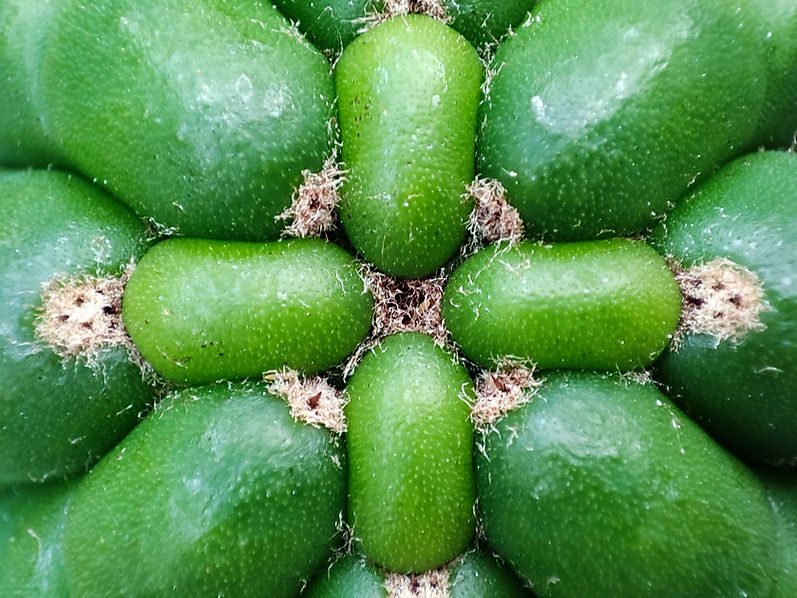Lophophora
(Peyote)
Peyote is native to southwestern Texas and Mexico, growing in scrubby desert and preferring limestone soil. Currently in Texas it has been over-harvested and its habitat increasingly used for ranching and "development" to the point that peyote is listed as an endangered species. This is made worse by the fact that peyote is extremely slow growing, though cultivated ones grow faster. Peyote comes from the Nahuatl word peyotl. It’s a small cactus with furry areoles instead of spines that rarely rises more than 3-4 cm above the soil surface. The largest part of the cactus is its long underground taproot. In the 1900s the Native American Church was established and legal protection was given for peyote rituals, harvesting and cultivation.
Trichocereus
(San Pedro)
The San Pedro cactus (Trichocereus Pachanoi or Echinopsis pachanoi) originates in the mountains of Peru and Ecuador where this sacramental cactus grows at an altitude of 2000-3000 meters. Nowadays this cactus can be found in other parts of the Andes, such as the Argentinean and Bolivian mountains. The San Pedro is a rapidly growing cactus: under the right circumstances, this cactus can grow up to 40 cm a year. The San Pedro cactus has an extensive history in shamanic culture. The most ancient signs of ritual use date back to 2000 years ago. Since the beginning of civilization in the Andes region, local shamans were using the San Pedro as part of their rituals, hailing the cactus as the “Materia Prima’. It was used not only as a religious sacrament, but also as a shamanic medicine.
Trichocereus Cuttings
(San Pedro)
How to root cuts Pot up into very loose very free draining substrate such as; horticultural grit, leca (expanded clay pebbles) and perlite. Keep in a warm environment with good airflow no need for strong light during this process. Its recommended not to water until its first roots have formed. water lightly. Once the roots are developing well the cactus can be transferred to the final potting mix. wait a week or two before watering your cactus.











